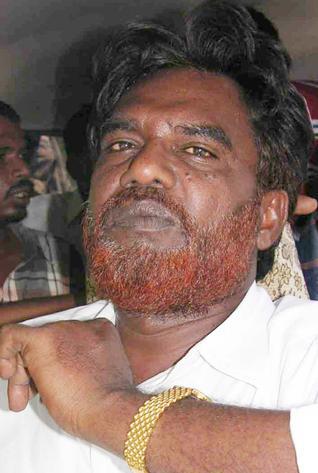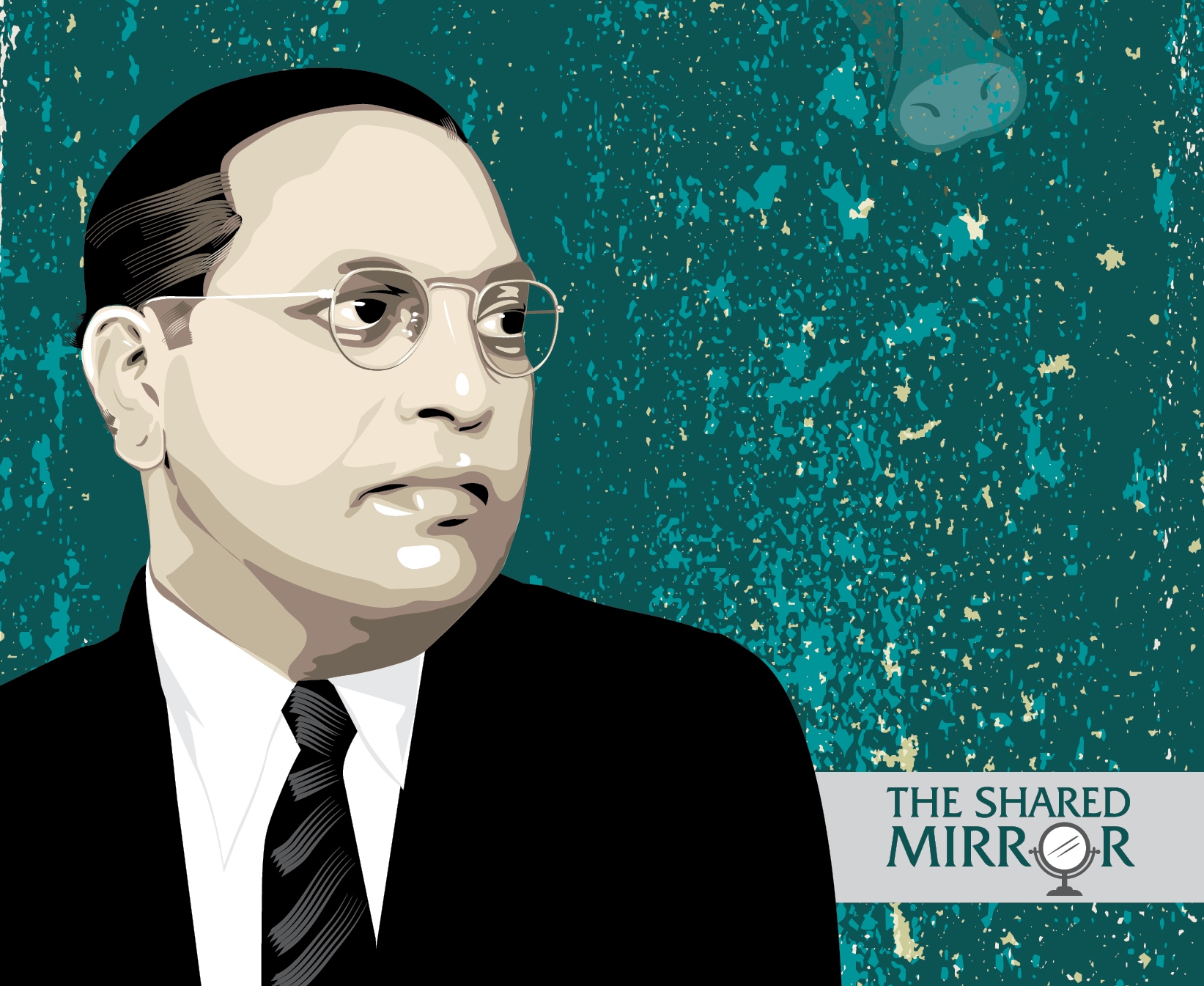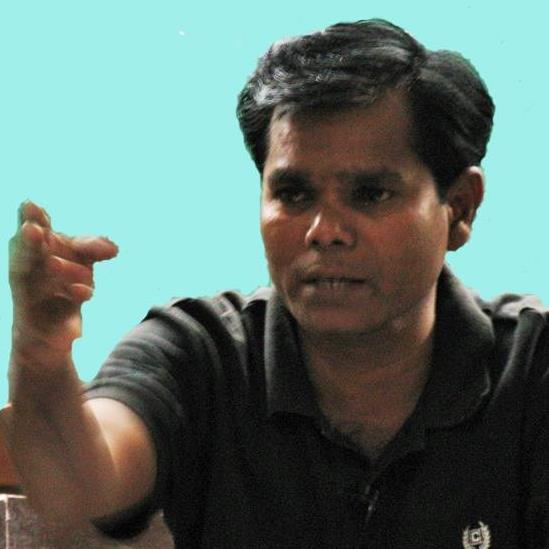Ravi Chandran
(With editorial suggestions from Kuffir)

This article is an attempt to bring together information about the Dalit revolutionary leader Pasupathi Pandian, who was brutally murdered a couple of days ago (January 10, 2012). Since only bits and pieces of news material is available on him, I tried to gather some information from the internet and by talking to a few Arunthathiyar friends. Most of the news reports refer to him as a reputed Dalit leader, however, a few Dalit leaders reject that claim and say he was just a rowdy. This is a small attempt from my side to throw some light on Mr. Pasupathi Pandian’s life from an Arunthathiyar perspective.
Every individual has a history which is influenced mostly by the society surrounding him/her. Therefore it is very important to construct or look at a person’s history– where he lived, what he saw and experienced.
The growth of Nadar hegemony
This article will focus on the southern districts of Tamil Nadu which have various dominant communities: Nadar, Naidu, Thevar, Nayakkars, etc. Nadars are predominant in the southern districts of Tuticorin, Kaniyakumari, Tirunelveli and Virudhunagar districts.
However, the history of the Nadar community, in short, is that they were a backward community. There were a few business men within the community, but during the Kamarajar rule the Nadars became economically more powerful. Special schools and banks for Nadars were started and in due course, they went on to achieve great heights in economic power.
It is true that Kamarajar was a great leader in many aspects, but his very important contribution, his love for his community, can also be seen in his actions while he was Chief Minister of Tamil Nadu. During the state reorganization, he did not oppose merging Iddukki district with Kerala because he was happy with Kanniyakumari merging with Tamil Nadu. To understand this, we should look a little closer into the demographic difference between the two districts. Iddukki had indigenous inhabitants belonging to the tribes – Muthuvans, Hill Pulayas, Mannans, Uralys, Malai Arayans, Ulladans, Palliyans, Malavedans and Mala Pandarams – all of whom were Tamils. In Kanyakumari there were Nadars.
Therefore the majority of the Tamil speaking population in Idukki region was given to Kerala, and Kanyakumari, with a Malayalam speaking majority, was taken into Tamil Nadu because of the presence of the Nadar community. The Chief Minister Mr. Kamaraj had an important role in it.
Kamaraj was a Chief Minister between 1954 – 1963. At present the Nadars constitute 12 per cent of the State’s population. Beyond the fireworks industry in Sivakasi, they have the influential Tamil media house – Thanthi – in their fold. The company is run by Sivanthi Adityan, whose brother Ramachandra Adityan floated Malai Murasu. There is also Dinakaran, founded by the late K P Kandaswamy, who was known for switching allegiance between AIADMK-founder MG Ramachandran and Karunanidhi.
The success of Nadars in business played a pivotal role in the rise of the community. Nadar grocery stores can be found today in almost every corner of Tamil Nadu. The success is mainly due to their frugality and determination, and many have risen from poverty. It is difficult to determine the wealth of a Nadar merchant, from outward appearances, for a very wealthy Nadar may sit very simply in his tiny shop.
With the growing supermacy of their community, their egos and pride grew, and that emboldened them to discriminate against Dalits, a majority of whom are Pallars, in that region. The Pallars have a little land, and some of them also work abroad. Hence, the Pallars at large do not depend on any upper caste for their daily bread. Therefore the struggle for equality began. The Nadars would harass/rape dalit women, and kill dalits who opposed their domination. It was a rowdy rajayam, or rowdy rule.
Rowdy Rajayam and atrocities on Dalits
Some news reports touching upon the rampant atrocities on Dalits in the region:
See, Frontline article, ‘From cradle to grave‘;
Frontline article ‘Novel campaign‘, about a novel ‘Eppadium (anyhow)’. Quoting a few lines from the article:
Eppadium (Anyhow) is his most recent work. The novel deals with the unpleasant situation prevailing in Vembar, a coastal village in Tuticorin district, where Christian populations belonging to Nadar, Paravar and Dalit castes run their own schools and administer separate parishes. Without hypocrisy, the author takes the bull by the horns. He narrates the insults heaped on Dalit Christians in the village through the denial of any role in the parish administration.
He recalled the attacks on Dalits at Nalumoolaikinaru and Kodiyankulam in Tuticorin district,…
Frontline article ‘Police in the dock‘:
The police rampage on the all-Dalit village of Kodiyankulam on August 31, 1995 (Frontline, October 20, 1995) when caste-related violence was rocking the southern districts in the mid-1990s was the worst. The word Kodiyankulam, has since then virtually become a synonym for state terrorism, particularly against Dalits, in this part of the country.
In Tamil Nadu’s southern districts, prisoners are segregated on the basis of castes:
Caste In Prison Stone
In the political biography of Tamil Nadu, conflict between Dalits and other backward castes (OBCs) is a chapter that is still being written. Not only is untouchability still widespread across the state’s southern districts like Ramanathapuram, Thoothukkudi, Thirunelveli, Madurai and Dharmapuri, there have been frequent clashes since the early 1990s between Dalits and Thevars, an OBC community with significant presence in the region. […]
Maran says he was beaten up for no reason by members of the jail staff who were Thevars. The food served in his Dalit block was scarcely edible and hardly enough to quell his hunger. His access to books and newspapers was restricted. His visiting time for friends and relatives who came calling was curtailed. He had to work, but was not paid. And he was deprived of medical attention. “Prison life does not offer anything to reduce the sense of [inflicted] violence,” he says, “It only flares it up.”
There are 1,600 prisoners in Palayamkottai Central Jail, and the segregation in this facility is very efficient. “Thevar, Nadar and Dalit prisoners are put in different blocks,” says Selvaraj, a constable who has been working there for a decade. “In this jail, [caste segregation] is inevitable. How can we mix up people from different castes? It is impossible. We cannot manage the violence [that will occur] if we do so.” […]
What happens in jail, however, only mirrors what happens outside during caste conflicts, according to Rajiv Rufus, a lawyer practising at the Madurai bench. “This is a strategy used by the government whenever caste violence erupts in these parts of Tamil Nadu,” he alleges, “Thevar cops are deployed in localities where Dalits live in, and vice-versa. This only escalates the violence.”
..because Pasupathi Pandian would intervene
There lies the background in which Pasupathi Pandian grew up. In 1980s, 1990s, there used to be only killings with sickles and police would not interfere. Tuticorin has a shipping harbor, and is a very important place, economically.
The Times of India says:
C Pasupathi Pandian gained notoriety even as a 11th standard school-going boy when a case of murder was registered against him in Tuticorin.
A native of Alangara Thattu village in Tuticorin, Pandian subsequently quit his studies. Since then, the path he travelled was marred by violent incidents where he dabbled between the roles of a person fighting against dalit atrocities.
The Nadars and the Upper castes in Tuitcorin got scared of him. Nadars, as I said earlier, had political and economic capital. But Pasupathi Pandian had the fire of courage to stop anyone who discriminates against Dalits. It is also to be noted there were Naxal movements in Tamil Nadu. The culture of violence, using country bombs, knives, guns was common among all communities. The same weapon used by the upper caste Nadar, was also used against them. I shall write about a few incidents here. Upper castes in not only that region but also in most of the southern districts were scared of Pasupathi Pandian, because Pasupathi Pandian would intervene (wherever Dalits faced discrimination).
An Arunthathiyar from Nellai says:
In 1980’s Mr. Pasupathi Pandian came to TN colony in Tirunelveli, met the Arunthathiyar and presented 50 knives and told them, leave your traditional occupation of Scavenging and attack anyone who discriminates or harasses you and it is my responsibility to take care of you.
An Arunthathiyar Leader, Naagai Thiruvaluvan, based in Madurai says:
In 1990’s in ParamaKudi, an Arunthathiyar girl was beaten by Pallars, there was a tensed situation between Arunthathiyars and Pallars. Pasupathi Pandian is also from a Pallar community, he went to the spot and abused the Pallars and asked them to treat Arunthathiyars equally.
Another Arunthathiyar Leader says:
While Arunthathiyars were fighting for inner-reservation which was not supported by any single non-arunthathiyar leaders, but Pasupathi Pandian as an exception who had the power to came to the stage and speak about the importance of Inner–reservation for Arunthathiyars.
Another Arunthathiyar leader, Dilipen, says:
There are sub-caste politics in Tamil Nadu as any other Indian state has. But in Tamil Nadu Pasupathi Pandian was considering all sub-castes as dalits and spoke in one voice. Not a single leader from Pallars will ever do the same, even in future.
Hegemonic violence and resistance
He had at least eight murder cases pending against him, besides several other cases of attempted murder, assault, possession of weapons. Among the murder cases, the most notable is the murder of rival Venkatesh Pannaiyar’s grandfather in the early 1990s. Venkatesh Pannaiyar (interestingly, Pannaiyar– who is better known as a local don– is reported to have helped AIADMK win the crucial Sattankulam by-elections, which came close on the heels of Jayalalithaa’s Anti-Conversion Bill. Sattankulam has a sizable Christian Nadar population. It is believed that Pannaiyar, subsequently, became a thorn for the party as he got embroiled in various scams and had to be “removed”.) group, which belongs to the Nadar community became a strong rival for the Pasupathi Pandian. In 1990s there there was a history of conflict between the Pullaveli village people and the Mulakarai Pannaiyar Sivasubramaiya Nadaar. The village was fighting for water. In this fight Pasupathi Pandian was supporting the village people. The fight went to the extent of the murder of Sivasubramaniya Nadaar’s son in 24-1-93. Sivasubramaniya Nadaar’s son was Asupathi Pannaiyar. Asupathi Pannaiyar was Venketash Pannaiyar’s father’s younger brother. As an act of revenge, in 21-4-1993, there was an attempt to kill Pasupathi Pandian. In this attempt Pasupathi Pandian escaped but his friend Ponn Esaki was murdered. On 8-7-93, Pasupathi Pandian group kills Sivasubramania Naadar. Since then there were several attempts to kill Pasupathi Pandian by the Nadaar groups. Venkatesha Pannaiyar was shot dead in a police encounter in Chennai on September 26, 2003. However Venkatesh Panniayar’s gang was growing.
1n 2000s, Tamil Nadu saw a range of Dalit movements. Particularly Dr. Krishnasamy and Mr. Thirumavalavan, were mobilizing dalits across Tamil Nadu. So many atrocities and killings happened even then in Southern districts. The Pallars, Arunthathiyars, Paraiyars in Southern Districts were getting mobilized on a democratic platform. It should be remembered that the background of their assertion has a significant link to Mr. Pasupathi Pandian’s courageous fight against the dominant community. The newly formed democratic platform was gaining importance, and Pasupathi Pandian started reducing his violent struggle against the dominant community. But the Pannaiyar group mobilized and was regrouping.
When Venkatesh Pannaiyar was shot dead in a police encounter in Chennai on September 26, 2003, a core group, including Dhanasingam, fled to Mumbai and remained under ground. According to The Hindu:
Dhanasingam, a henchman of the group, was involved in several offences. In 1992-93, he was lodged in the Tihar jail, Delhi, where he developed links with criminals. In recent years, he emerged a successful arms supplier to criminals.
Police sources said P. Dhanasingam alias Seenivasan of Eral, was a top gunrunner and had links with clandestine weapon dealers. During preliminary interrogation, he confessed to having purchased twenty 9-mm (semi-automatic self-loading) pistols, two 7.62-mm pistols and one stengun from Hemanth Singh of Jamalpur in Bihar late last year. (The Chennai police arrested Hemanth Singh in Bihar soon after the death of Venkatesh Pannaiyar last year).
If there was a Dalit leader who worked selflessly for the Dalit community, sacrificing everything, it was only Pasupathi Pandian
Therefore it is very important to understand the difference between the Pannaiyar (Nadar) community using violence and Pasupathi Pandian using violence. Pasupathi Pandian’s use of violence began as a retaliation against the Nadar Pannaiyars for equality. Panniyaar’s violence was for their domination, with economic, political power they grew into arms dealers etc. But Pasupathi Pandian, left violence after the democratic fight for Dalits began. Therefore the fight of Pasupathi Pandian is very different compared to Pannaiyar. Even the recent examples of how the dalit movement in Tamil Nadu is shaping up are illustrative. It is only sourthern dalits who are more assertive. Even the Arunthathiyar, a scavenging/leather working community is more assertive in Tuticorin than any other place in Tamil Nadu. This credit goes to Pasupathi Pandian. The saddest part is that even the dalit movement does not see the relation between Pasupathi Pandian’s struggle with the Naxal movement. Only difference was Pasupathi Pandian did not have a red colored flag, or some fluent English speaking associates to write about what he was doing, therefore even many dalits get diverted in judging him. And also the educated Dalits kept away from him and were comfortable with Thirumavalavan’s and Krishnasamy’s party politics. I have to say that once the Dalits learnt to assert themselves, they kept away from Pasupathi Pandian. Which was a drawback for him, because there were no selfish Dalit associates around him, who speak rubbish on stage and do the exact opposite behind the screen. Pasupathi Pandian was rational, and never cared about hypocrites.
Again, from The Times of India:
As the number of his rivals rose, the number of his close associates were eliminated in bloody fights one after the other. Peer Mohamed, Karnan and Damodaran were brutally murdered in Tuticorin though Pandian gave death a miss every time.
His first political stint began with joining the Pattali Makkal Katchi (PMK). He remained with the party only for a short period and quit PMK to start Devendran Kula Ilaignar Peravai, a dalit youth forum. It was around that time that, he married Jacintha, an advocate from Dindigul who remained a source of support for her husband till she was brutally murdered in 2006.
On April 7, a gang intercepted the car in which she and her husband were travelling at Eppothumvenran village in Tuticorin. A gang of about 20 persons got down from it and hurled bombs at Pandian’s car and when they did not explode properly, the gang shot dead Jacintha, who was trapped in the car. Pandian however escaped unhurt and managed to flee the spot in another car, in which his associates were following.
In fact, Pandian had managed to have a narrow escape four times. Once, he was hacked indiscriminately by his rivals at a market in Tuticorin who assumed that he was dead and left the spot. In another incident at Vallanadu in Tirunelveli, he managed to escape a gun-firing.
As the group rivalry lead to a series of murders, the then Tuticorin SP Jangid had warned Pandian to leave Tuticorin. After residing briefly in Tirunelveli, he moved away to Dindigul where he was staying in various places to avoid his enemies.
As the threat to his life rose, he maintained a low profile and was not even active among his community circle. Of late, he was making demands to remove ‘pallars’ from the list of scheduled caste and instead include them in most backward class. He was also opposing the terming of pallars, as adi dravidars.
In 21st century, if there was a Dalit leader who worked selflessly for all the Dalit community, losing everything, his family, friends, etc., it was only Pasupathi Pandian.
Why Pasupathi Pandian was killed: the political background
After AIADMK came to power, in Paramagudi, Pallars who were assertive were killed by the Thevars in power. It is to be noted that whenever the AIADMK comes to power, the Thevars in southern districts commit too many atrocities on Dalits. Paramagudi killings made it clear for a majority of the Dalits that it was the AIADMK which killed Dalits in Paramagudi. This would surely backfire for the vote bank politics of the AIADMK in the future. Also AIADMK cannot rely on Pallars/or any other dalit community in elections.
Therefore to increase its vote bank, the AIADMK has to make sure other communities votes for AIADMK. The Nadars who constitute 12% of the vote bank politics support DMK. The reason: AIADMK killed Venkatesh Pannaiyar in 2003. Immediately after his killing, DMK offered a seat to Pannaiyar’s wife and she won the election. Since Dalits are not going to vote for AIADMK, it is important for AIADMK to look towards other communities for votes, and only the Nadars can help. To woo them, AIADMK could have made an agreement to make sure Pasupathi Pandiyan, a strong rival to Nadar community is eliminated. Recently the government killed dalits in Paramagudi and got national attention, therefore the state government cannot take another risk by making police kill Pasupathi Pandian. It is possible the state government could have said, anyone can kill Pasupathi Pandian, and the state will not interfere.
The reasons for such a doubt: since it is a planned attack, the special branch of the police must have had news of it. And also Pandiyan did not die on the spot, but on the way to the hospital, and no one knows what he spoke, in his last moments.
~~~~~~~~
Some more news articles, links about Annan Pasupathi Pandiyan:
Pasupathi Pandian’s wife killed
Annan Pasupathi Pandian’s speech
~~~~~~~~
Ravi Chandran (EFLU, Hyderabad) blogs here.









